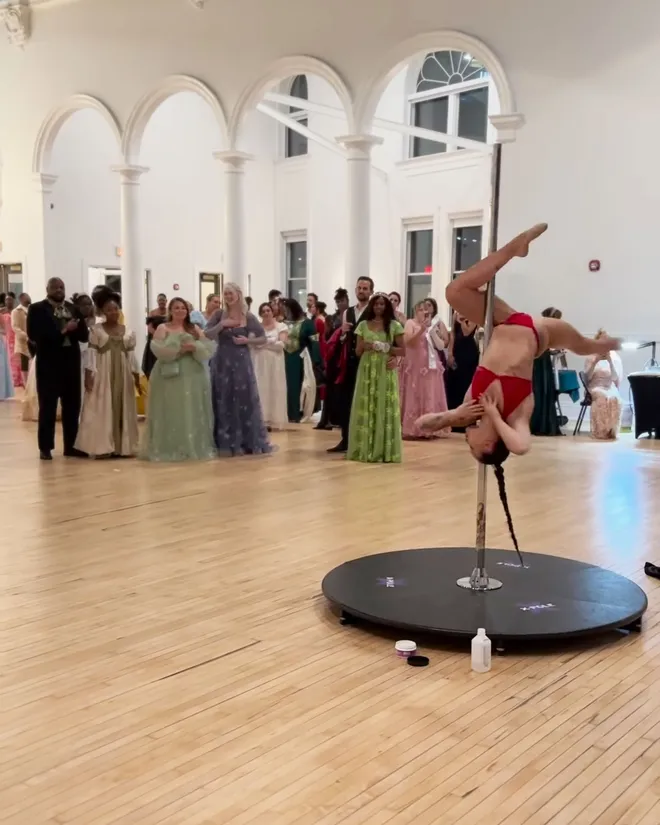I expect by now the outrageous tale of Judge Kenneth King of the 36th District Court here in Detroit has spread to your neck of the woods, but just in case it hasn’t…
Judge King is something of a showboat. No, he is a shameless showboat, no something about it. His courtroom actions are streamed on his YouTube channel, and you know what they say about courtroom cameras — sooner or later, someone’s going to play to them, and in this case, it’s the judge. He seems to consider himself an undiscovered court-TV personality, and has a fan group that he regularly interacts with on Facebook.
So the other day a local nonprofit brought a group of teens to his courtroom on a field trip, and one of them, Eva Goodman, fell asleep during the judge’s talk to the group. He didn’t take this well:
After speaking for about 45 minutes, King walked over to the young woman and screamed, “wake up!” Then he asked if he was boring her, before suggesting “there’s one in every group.”
Alas, Eva was very tired that day, and fell asleep again. Well. This was too much for King:
He ultimately decided she needed to “take a walk in the back to see where we keep our people who are disrespectful to the court.”
On Wednesday, King told the Free Press he felt disrespected mainly by her body language.
About two hours later, he had court staff bring her back into the room. At this point she’s wearing a green jumpsuit, the words “Wayne County jail” printed on the back. Her hands are cuffed in front of her body.
…Jumping from his seat, King repeatedly questions the young woman before offering his own comments.
“You sleep at home in your bed, not in court. And quite frankly, I don’t like your attitude,” King said.
Yes. He had this sleepy girl dressed in jail clothing, handcuffed and then? He held a mock trial, of sorts, and threatened her with juvenile detention. You really should read the story. It’s amazing.
But it gets worse. It turns out the reason the girl kept falling asleep? Her family is homeless. Not living-on-the-street homeless, but the more common variety of bouncing around from place to place with her mother and siblings, and the previous night had been a rough one. This came out later, when the circle of people who know about King’s courtroom had expanded well beyond his fan group.
The best thing written about it was this column by a Freep contributor, who pointed out, correctly, that this is one reason black teens run from police, etc.:
(H)is actions reinforced the pipeline to prison culture that community activists are continually fighting against. That culture includes everything from metal detectors and uniforms in public schools to forcing young people to cut their hair because it’s too long, or suggesting that wearing a hoodie or engaging in other normal teen activities are inherently suspicious and must be policed.
Precisely. It needs to be pointed out, again and again until people get it, that the reason Ferguson, Mo. exploded 10 years ago wasn’t the death of Michael Brown, but the years-long abuse of poor people by not only the police, but the entire judicial system, and you should read Radley Balko on this subject:
After the death of Michael Brown, we learned that black and poor residents of St. Louis County were essentially treated like walking ATMs. The mid-20th Century migration of white people to the suburbs, and then the exurbs — and their attempt to exclude black people each step of the way — resulted in an astonishing number of tiny “postage stamp” municipalities, most of which had their own police department and were funded by fines and fees imposed on their residents. The poorer the town, the more it needed fines and fees to operate.
Anyway, things aren’t going so well for King at the moment. His docket has been taken from him, he lost a teaching gig at Wayne State, and he’ll be lucky to keep his job, although he probably will, unless Fox News snatches him up and makes him a member of The Five or something.
But enough about him. Let’s turn instead to the turgid prose of Tim Goeglein, who apparently has found a sucker editor at the surviving daily in Fort Wayne, the Journal Gazette, willing to publish his columns:
He writes on Sunday of his misty water-colored memories of going to the Embassy Theater downtown to see old movies with Ma and Pa Goeglein:
The rain was pouring in monsoon-like waves in downtown Fort Wayne. The cars were splashing buckets-full of water hither and yon. People were skittering across the puddled streets like stones across ponds.
Everyone was being lashed by the fury of a Midwestern downpour, a soaker.
The windshield wipers clicking at record speed, my father pulled up our maroon Jim Kelley Buick LaSabre to the front doors of the Embassy Theatre on West Jefferson Boulevard.
All I remember seeing was a forest of umbrellas amid the bright, luminous, brilliant, beautiful lights of that singularly familiar Embassy marquee flashing its message: “Friday Nights at the Movies.”
Tim owns a thesaurus, but hasn’t absorbed the message that you don’t have to use all the synonyms when you look up an adjective.
It goes on — and on and on and on — until it reaches a sloppy climax with what else? The organ recital that preceded the movie:
We found seats midsection, and then, as if on cue, rising like a phoenix from the floor, as if out of nowhere, a kind of magic happened: the most glorious, riveting tones of a colossal organ as if from the highest plain of heaven.
Pipes of every tone and tempo kept us awash in the glory of pure sound, a kind of elixir for the ears.
It was the Grande Page Pipe Organ, rising before us as if from the MGM soundstage in Hollywood itself. Has there ever been a more amazing instrument in the history of our nation?
Well, yes, Tim. These theater organs were quite common in old movie houses. There was one in Columbus, which I heard when my mom took me to the old-movie screenings at the Ohio Theater there. There’s one in Detroit, at the Redford Theater. But I’m amazed at Tim’s amazement: Pipes “of every tone and tempo.” The “most glorious, riveting tones.” The MOST AMAZING INSTRUMENT IN THE HISTORY OF OUR NATION.” I’d think he was kidding if I didn’t know he wasn’t.
After one of his last columns, I wrote a letter to the editor of the Journal Gazette. Cruelly, they didn’t print it. So I will copy/paste it here:
I haven’t lived in Fort Wayne for nearly 20 years, but given the role I played in the loss of his White House job, I’ve since taken a particular interest in Timothy Goeglein’s writing, appearing occasionally in the JG’s opinion section. As a writer myself, and as one who wants everyone to be a better one, sometimes this is painful; I’ve rarely seen such floridly composed word salads, to use a phrase Tim might employ. I won’t call them “hate reads” — I’m trying to be a better person in my dotage — but my fingers often twitch toward an imaginary blue pencil to strip the lard, the filigree, and especially the adverbs out of his rhapsodical tributes to whatever misty water-colored memory is striking him today.
I’m also an editor, and know that self-editing is difficult. But can’t anyone at the Journal Gazette take a little hot air out of these balloons, perhaps by paring Tim’s “tall and willowy, thin as a rail” piano teacher down to just “willowy,” as that word literally means tall and thin? Or suggest that “a museum specializing in great art” redundantly states the definition of art museums, unless he knows of one that specializes in mediocre stuff.
To Tim, I offer my services as a writing coach. My email’s easy to find. Give me one paragraph, 100 words tops, on…something you dislike. Tight. No adverbs. We’ll start there. It may be a journey of a thousand miles, but it’s gotta start somewhere.
He won’t take me up on it. Sigh.
OK, Monday looms. Punch it in the face!






